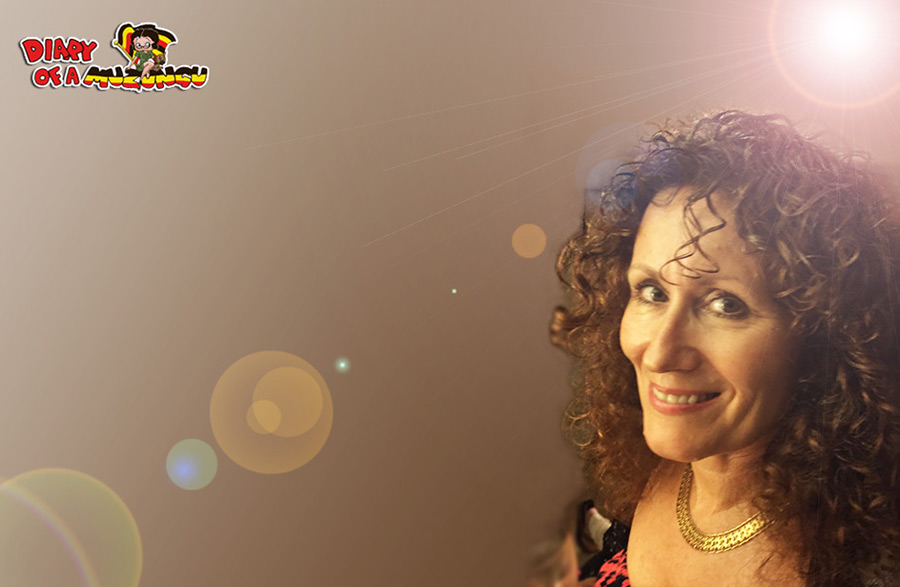Warning – this blog contains snakes!
Entebbe’s Reptiles Village has been on my list of places to visit for ages.

Chameleon, Reptiles Village Entebbe. Close-up of one of the world’s most fascinating creatures!
When I suggested to the team that we all have a day out together at the Reptiles Village in Entebbe, organised by Nature Uganda, we were equally split down the middle: two for, two against. Enid’s words were in fact “No way, I’m not giving up my Saturday to see snakes!”
After the office was repainted, I noticed that she put back the posters of birds, butterflies and mammals – but not the one of the snakes. Patrick is equally averse to snakes – I remember his look of disgust when we walked past the enormous python at UWEC (a.k.a. Entebbe Zoo). To be fair though, last year a cousin of theirs was killed by a notorious Puff Adder out in the bush towards Tanzania; he was dead within a few hours.
It’s run by a Ugandan who is passionate about snakes in particular and reptiles in general. All the animals he rescues are native to Uganda. He rescues reptiles that are in danger of being killed by humans, and tries his best to ‘sensitise’ people (as we seem to be doing with elephants, dogs, birds, you name it)…
The message is generally: “you don’t have to kill it – it’s unlikely to harm you unless provoked and there are measures to deal with elephants, dogs, birds” [complete as appropriate]. Today at Reptiles Village, I couldn’t stop myself telling people off. I was tired, I wasn’t very gentle, I just said “stop doing that.”
Each reptile has a story. The Monitor Lizard only has one claw on its left paw, as a result of the fight he had with the humans who wanted to use his skin to make a drum. The shell of one of the Leopard Tortoises seems to have melted, where it was rescued from a fire. “I hear they are very good for traditional medicine,” one lady said. “Some people eat them,” someone else said.

Monitor Lizard and baby crocs – cute – at this size!
If you turn a tortoise upside down, it will panic and wee itself. If it does this too often it will become dehydrated and eventually die. I didn’t know this myself until last year. I bought a tortoise from some boys down one of the back roads in Muyenga (I shouldn’t have, I realise now). Anyway the tortoise (who didn’t hang around long enough to get a name) tumbled over a step and overturned. I turned him the right way up – and he did the most enormous turd (a sure sign he was scared!)
Being on today’s trip reminds me how much people need to be sensitised. These are not even your average Ugandans; these are people with a proven interest in conservation, and yet they were letting the kids pull leaves off the young saplings and getting too close to the animals. It was a fun and interesting day out but it just reminds me how much work there is to do in conservation in Uganda.
The lady guide was very informative but admitted she won’t hold a snake! We were lucky enough to have a HERPS (herpetology / reptile) specialist, Mathias, on our group. He was a mine of information.

Watching us without moving. An African Rock Python, Reptiles Village, Entebbe

Like a sentry on duty, the first snake we saw was the Forest Cobra, head up and in aggressive mood. Reptiles Village Entebbe
The three metre (?) long African Rock Python is a constrictor. Apparently this is the only snake large enough to consider eating a human but attacks are very rare, although their long teeth can inflict painful wounds. These beasts are often found in caves.
We couldn’t believe our eyes when we saw a small manky-looking puppy curled up asleep in the same cage. “Breakfast,” we asked? Twenty minutes later it had gone, nowhere to be seen! The snake hadn’t moved though so we can’t blame him…

Jackson’s Chameleons at Reptiles Village, Entebbe
Holding the pretty Von Hohnel’s Chameleon was a highlight of the day. Its black tongue is coiled tightly like a spring enabling, it to PING into action and trap insects half a metre away! Its eyes are hilarious, constantly rotating, one looking forward and down while the other looks backwards and up! “How does the brain process all that information?!” Erik asked.
Everyone loved the Twig Snake. It was the thickness of a twig, brown and only a foot long. Amazingly, however, this tiny little snake can give you a nasty death, poisoning you over the course of a week.
Death by other snake bites can be much quicker, especially if you’re in a remote area without access to the anti-venom injections, which is most likely. To put this in perspective though – assuming you’ve had the courage to read this far – only 10% of the snakes in Uganda are venomous. You’d be incredibly unlucky to meet one of that 10% and if you were to get bitten, they don’t necessarily release their poison either. I do love seeing Ugandans interacting positively with reptiles. (There seems to be so much fear around them, even though most are harmless).
Frankly I’ve hardly seen any snakes in my first two and a half years living in Uganda: two dead grey ones in the road and a couple of harmless Grass Snakes in our compound.
I had to wait a year before I saw a decent snake: and there it was stretched across the whole length of the road ahead of us, an enormous black snake (not a Black Mamba, they’re actually grey), on the road to Uganda Wildlife Authority campsite in Ishasha. It was a beauty!



